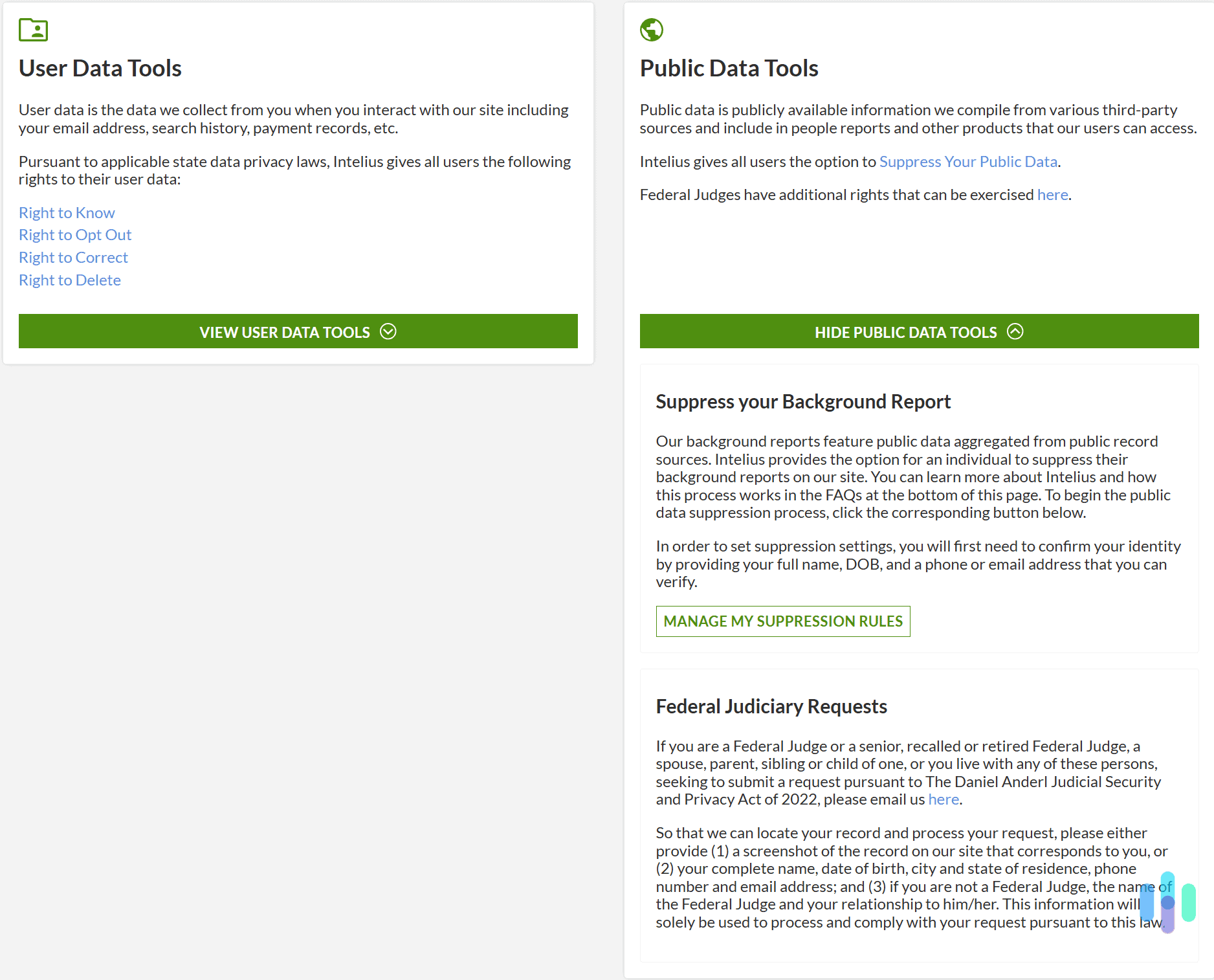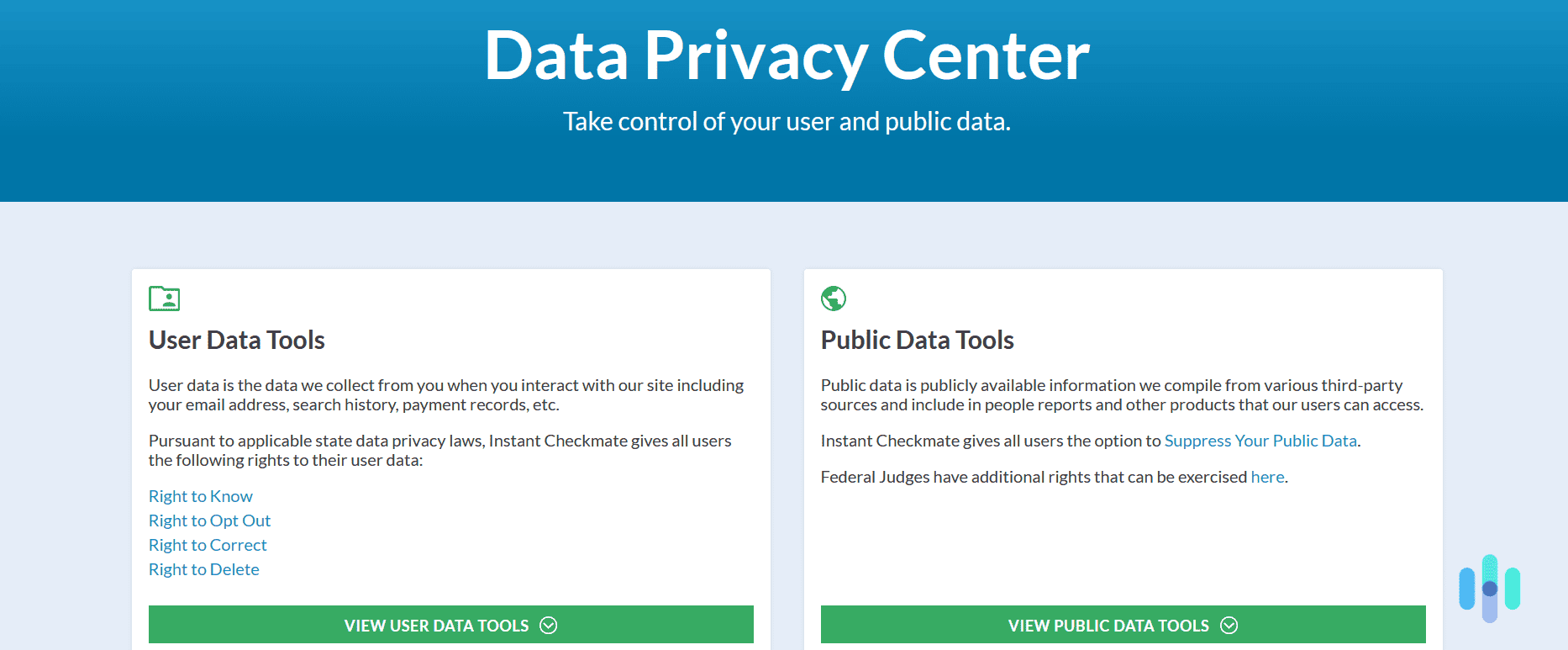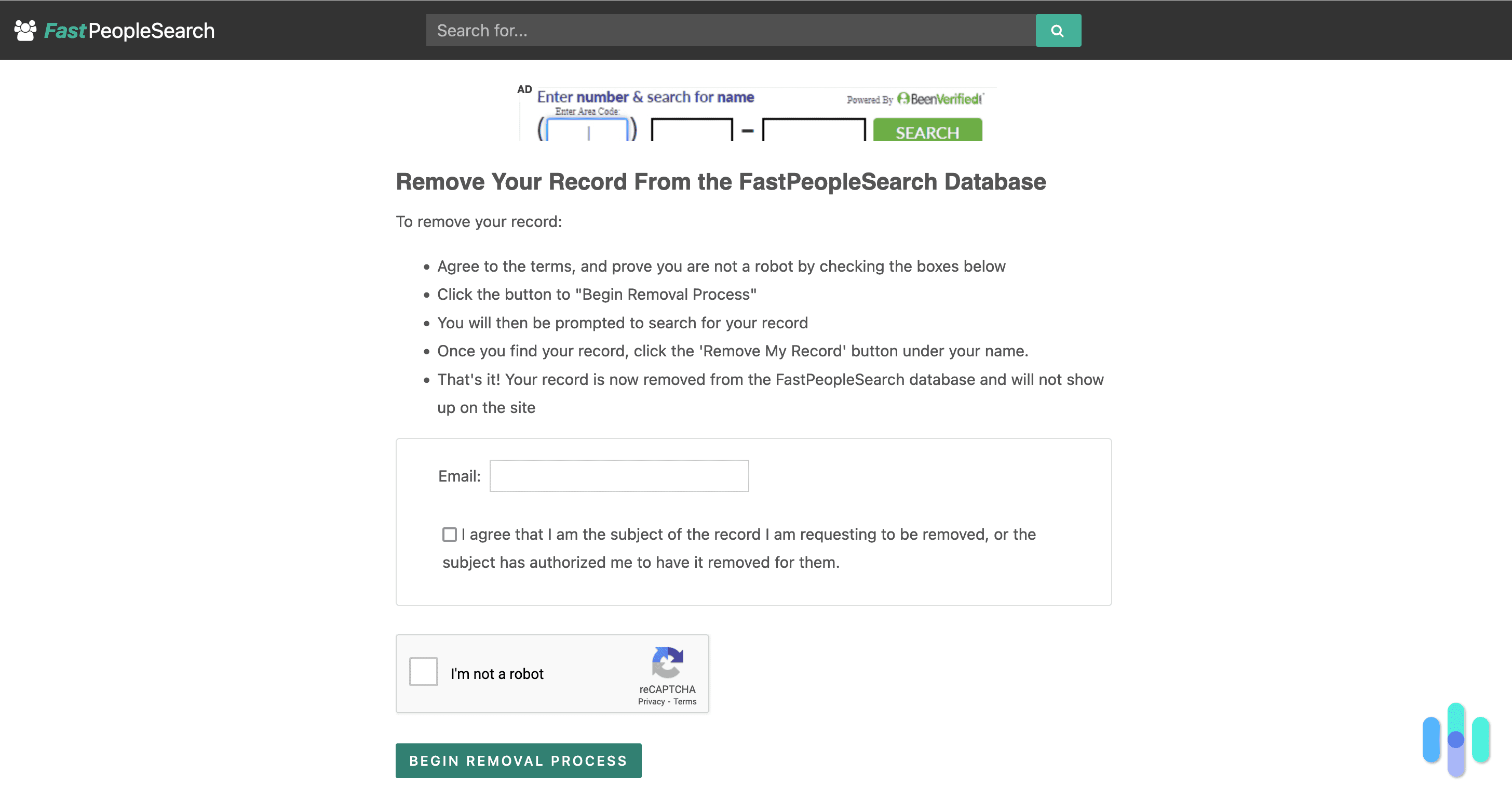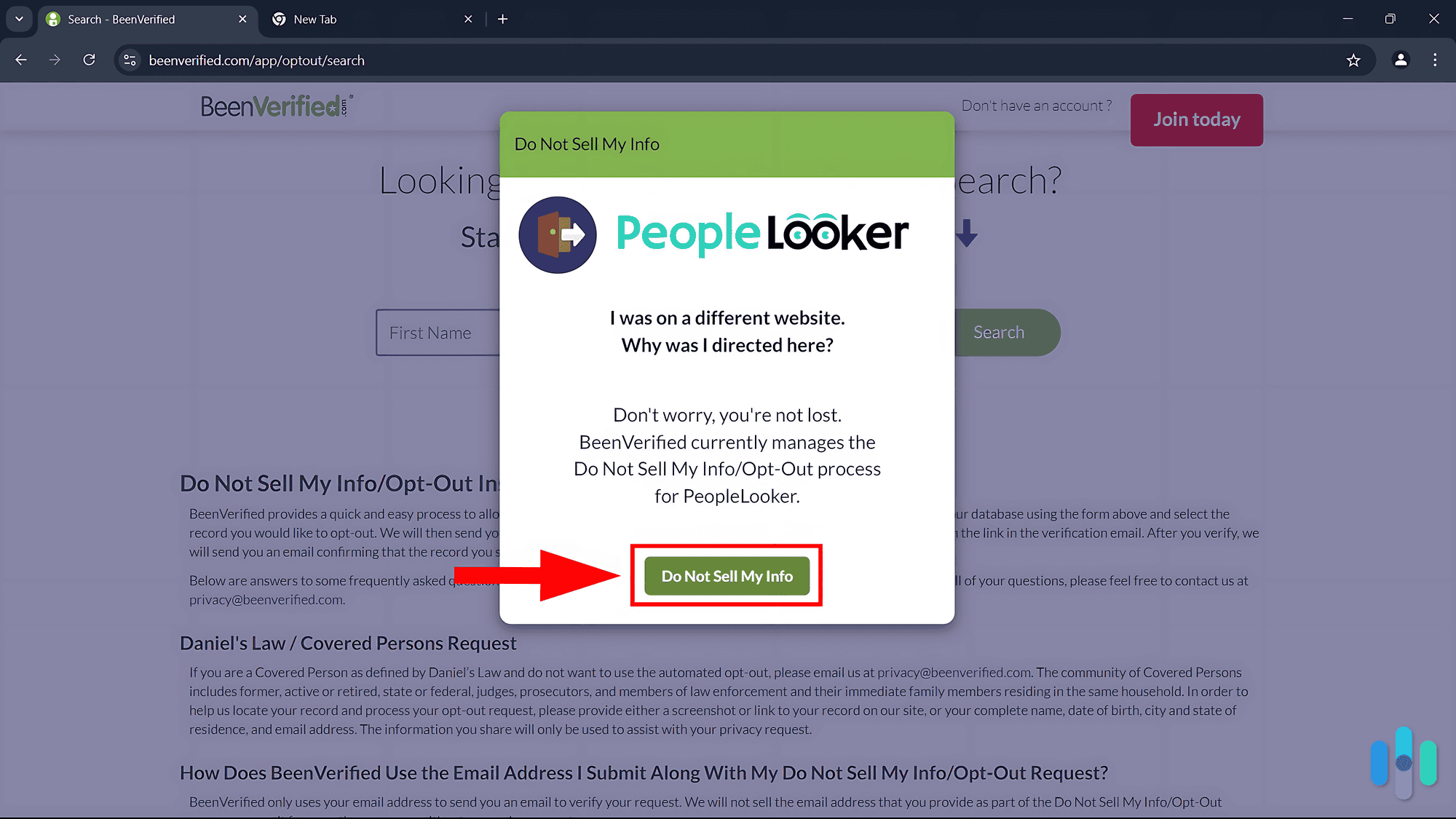Remember those phonebooks from a few decades ago? They contained so much information and were so thick that our grandma used to use them as booster seats when we came over. Back then, it was okay to have so much information published because it was our only way to find and contact people. However, today’s digital version of phonebooks — data brokers and people search sites such as PeopleFinders — is far more sinister.
These people search sites gather personally identifiable information (PII) from numerous public sources and create a profile of you, whether you like it or not. And technically, they aren’t breaking any laws. They are simply aggregating data that is already publicly available. The problem is that they make it incredibly easy for anyone from stalkers to scammers and identity thieves to access our personal details. That’s one reason why 81 percent of American adults feel that they don’t have control of their data.1 That’s also why we encourage you to opt out of data brokers like PeopleFinders — either using a data removal service like Incogni or by going through the site’s opt-out process.
Quick Note: Data removal services are paid services that check hundreds of data broker sites for your information and request its removal on your behalf. The best data removal services we’ve tested are Incogni, Kanary, and Optery.
What Is PeopleFinders?
PeopleFinder is one of the many data brokers that exist on the internet. Using the website, you can simply type in the name of the person you’re looking for and their city and state. The service will do a search of its records and give you all the information it has on that person for a small fee. It’s actually a subscription service, so if you’re a paying user, you can perform unlimited searches.
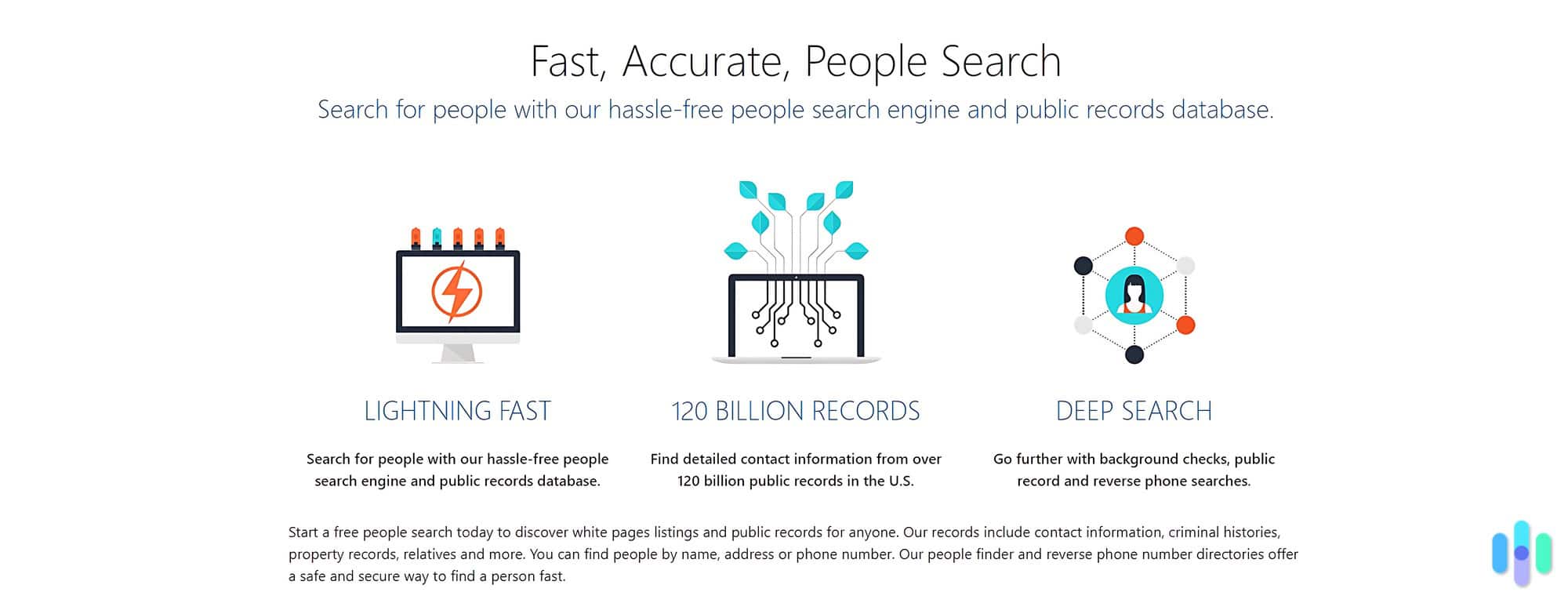
You can also do reverse lookups — you type in the phone number, email, or address of a person you want to find and PeopleFinder will find records that match. Let’s say you gave your phone number to a person you met at a night out. They’d be able to find out things like your name, where you live, past criminal records if any, property records, and so on — practically anything PeopleFinders has on you. Even scarier is that PeopleFinders now claims to have over 150 billion records and counting from over 6,000 sources, making it one of the largest data aggregators in the United States.
Expert Insight: When we tested PeopleFinders, it offered us comprehensive background checks for $2.95 for the first three days. Each search took about three to five minutes. Just imagine how many profiles a potential criminal could pull in three days for less than the price of coffee.
How to Opt Out of PeopleFinders
The good news is that while you can’t prevent PeopleFinders from collecting future data about you, you can remove your existing profiles from their database. This means when someone searches for your name, phone number, or email address, they won’t find any results.
Here’s how to do that.
- Navigate to the PeopleFinders’ opt-out page. Now, you won’t find a link to that page anywhere on the homescreen. You’d need to know the exact URL, so here you go: https://www.peoplefinders.com/opt-out. Simply click the link or copy/paste it into your browser’s search bar.
Pro Tip: Whenever you’re opting out of a data broker site and you can’t find the opt-out page, we’ve found that searching ‘[site’s name] + opt out’ on Google usually works. Just scroll past the sponsored results and you’ll see the page you’re looking for. If you don’t, you can also visit the site’s privacy policy. The opt-out procedure is usually under the “Your Rights” section.
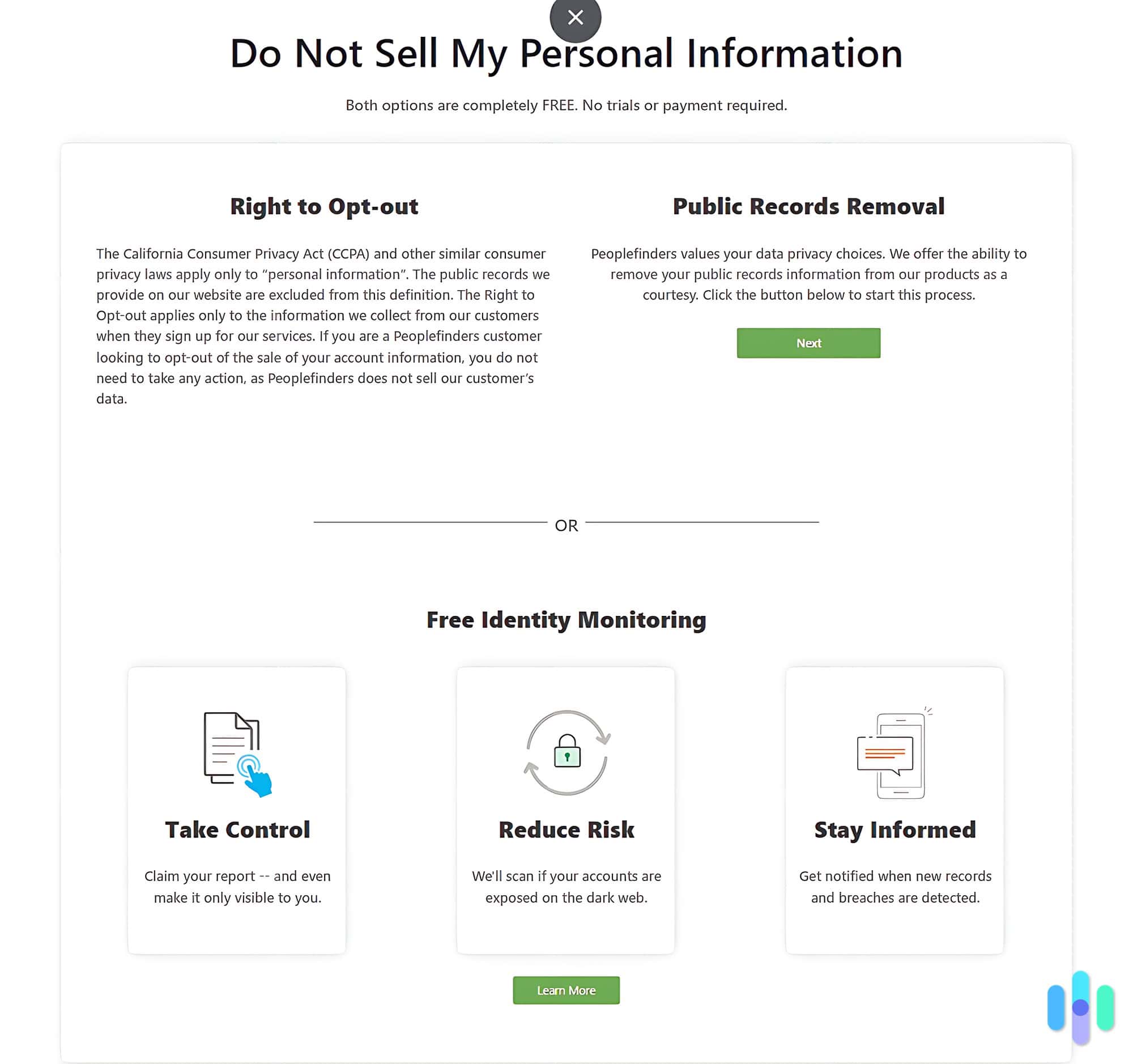
- Start the removal. We noticed that PeopleFinders offers an alternative to opting out that actually sounds good at first — free dark web monitoring so it can alert you if your information or online accounts are exposed on the dark web. It’s one of the features we look for in identity theft protection services we use. Don’t fall for it though; dark web monitoring doesn’t stop identity thieves from stealing your information anywhere but the dark web. We say click that “Next” button under Public Records Removal without hesitation.
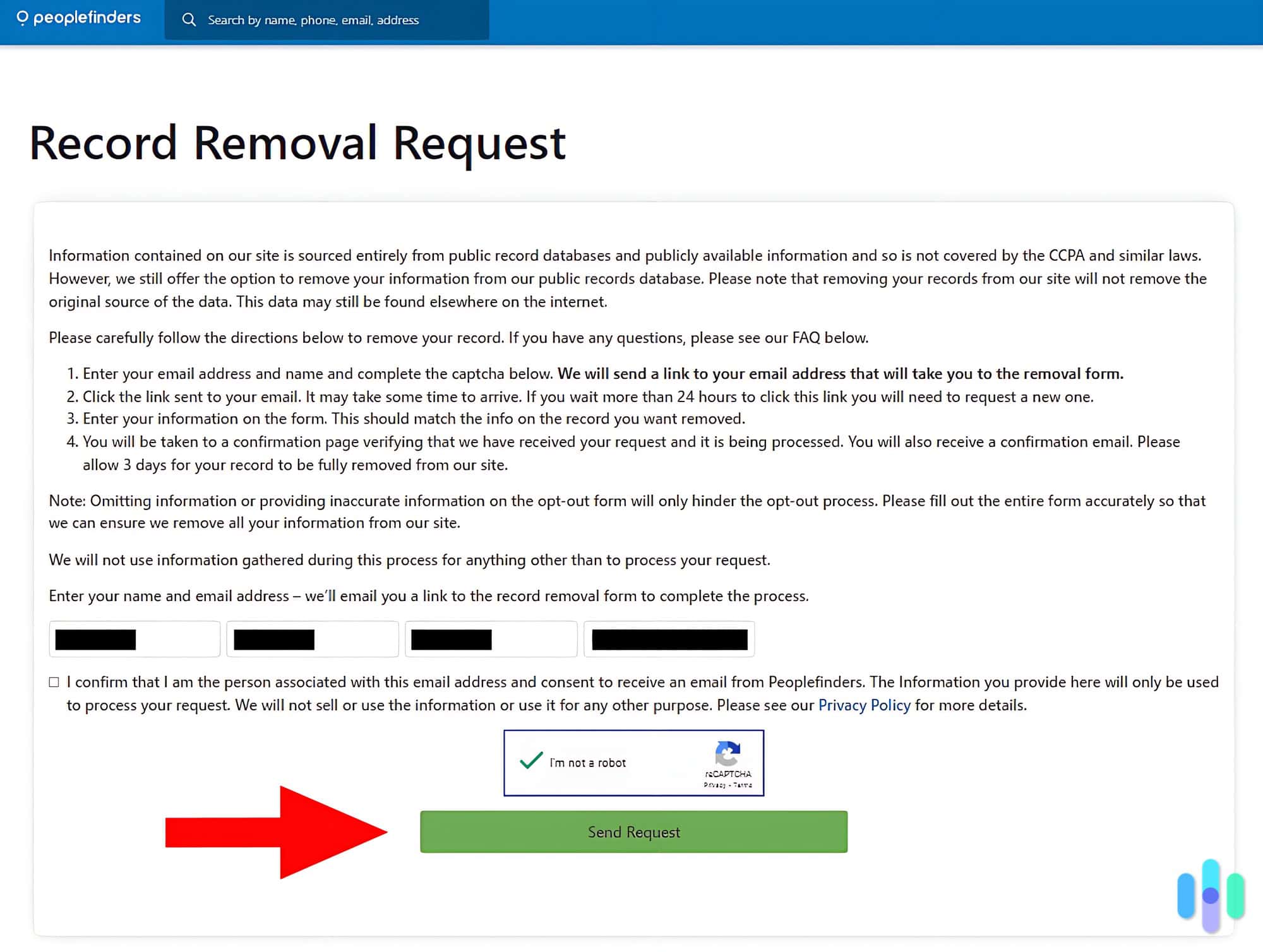
- Fill out the record Removal Request Form. Fill out the Removal Request Form with your name and email address, then complete a CAPTCHA. PeopleFinders will then send a link to its removal form to the email address you provided.
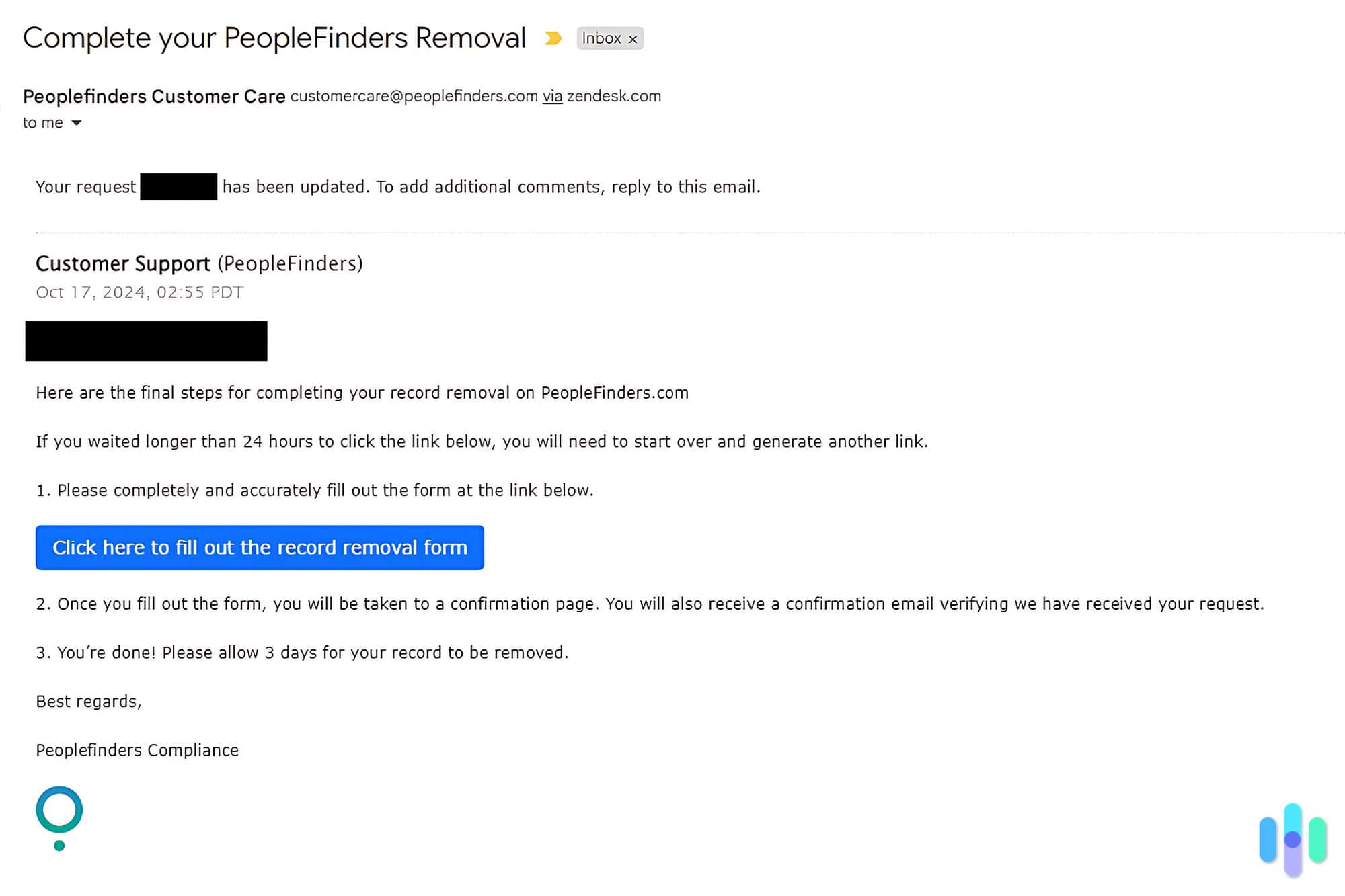
- Retrieve the confirmation email. Go to your inbox and click the link provided in the confirmation email. The link expires after 24 hours, and if it does, you’ll need to start over. So make sure you have access to the email you’re entering into the Removal Request Form.
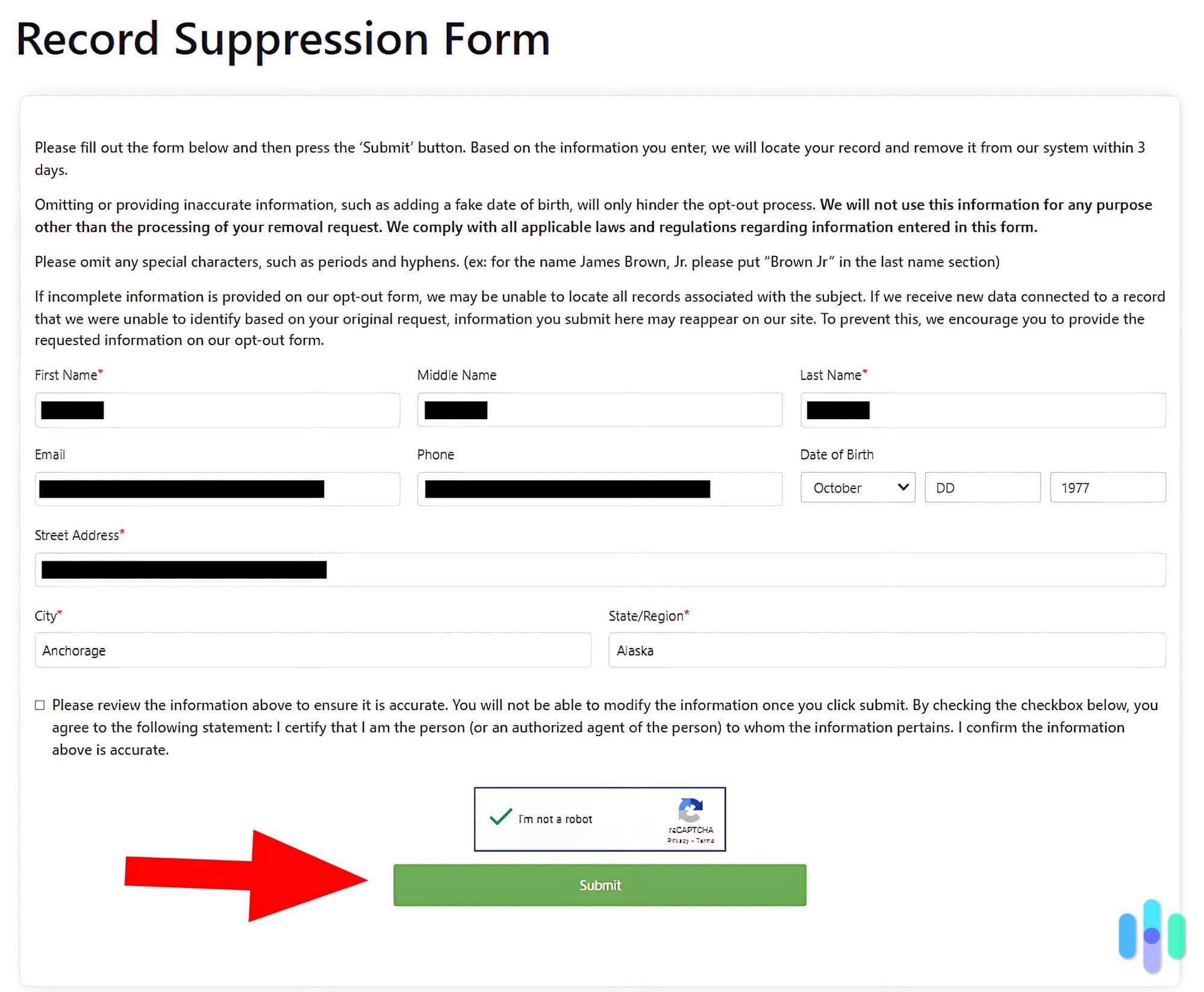
- Complete the Record Suppression Form. The confirmation link takes you to another form called a Record Suppression Form. You’ll need to fill this out as accurately as possible. PeopleFinders states on the page that the information you provide will only be used to process your removal request. Since there’s no alternative method, we recommend filling it out completely.
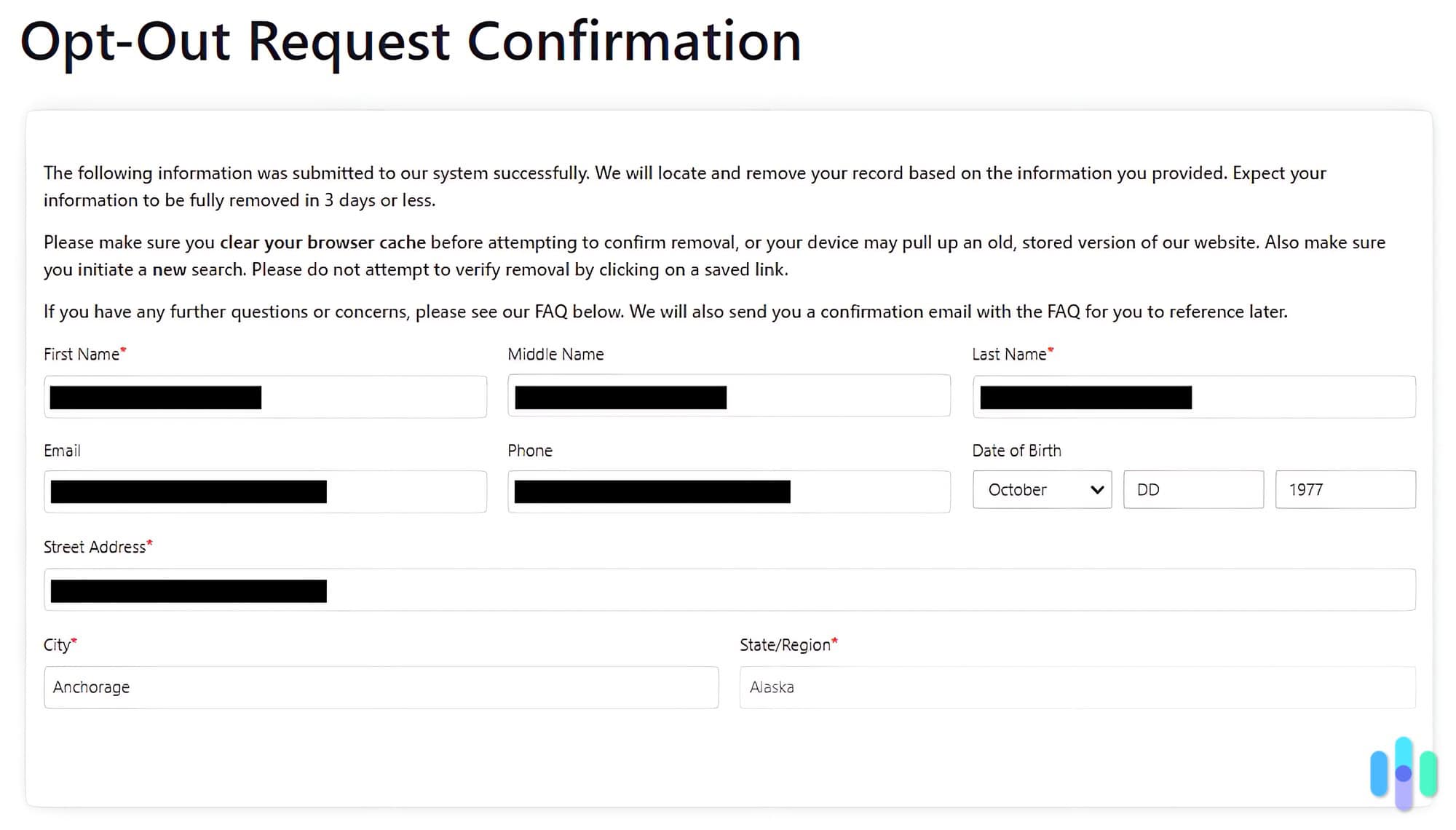
- Wait. PeopleFinders says you should allow three days for your information to be removed from the site. In our experience though, most profiles we requested removal for were removed within less than 24 hours. To confirm your information has been removed, clear your browser cache, navigate to the PeopleFinders website, and search for your information.
- Unsuccessful? It might be time to give PeopleFinders a call. We opted out five profiles of our team members and all were successfully removed. If you happen to have less luck removing your profile, you can call PeopleFinders’ customer service at (800) 718-8997. That is, unfortunately, the only recourse the service offers if your opt-out request isn’t pushing through.
>> Learn More: How to Opt Out of USPhoneBook
Opting Out of PeopleFinders Using Data Removal Services
We’ve discovered a simpler, more comprehensive solution. Data removal services automatically handle the tedious work of finding and removing your information from data broker sites. These services scan hundreds of data broker websites, not just PeopleFinders, and submit removal requests on your behalf. There are such automated services, such as Incogni, for example. Others, on the other hand, employ actual data removal experts to manually search and thoroughly remove your information from data broker lists. DeleteMe is one example.
>> Compare: DeleteMe vs. Incogni
No matter which service you end up using, the process is generally the same and easy.
- Buy a subscription.
- Enter your personal information.
- Wait.
That’s a whole lot shorter than going through six or seven steps to manually opt out of PeopleFinders. And data removal services can remove your profiles from more than just one site — most of them can remove information from hundreds of people search sites. During our testing, Incogni sent out over 180 removal requests in just one week, successfully removing data from 89% of the sites within 30 days.
The downside is that data removal services require a subscription. Prices typically range from about $6 per month to over $25 per month, depending on the service provider, features, and subscription length.
We think they’re worth it though, given the convenience they provide. You won’t have to sit in front of your computer for days finding opt-out pages, solving CAPTCHAs, and filling out removal request forms. You can if you want to, but we think using a data removal service is more practical and convenient.
>> Up Next: How to Opt Out of TruePeopleSearch
Aura makes it easy to search for your information and remove it from PeopleFinders.

Why Opt Out of PeopleFinders
What do you get from opting out, and why do we recommend spending time, money, or both just to get your profile removed from PeopleFinders? Well, there are a couple of important things to consider.
There is no real way to prevent identity theft.
That’s the grim truth we’ve learned from being in the industry for so long. Our personal information is everywhere, and some things that can result in identity theft such as data breaches are out of our hands.
The best strategy to reduce our risk of identity theft is to minimize our digital footprint. Removing your information from PeopleFinders and similar data broker services is a great start. While your data may still exist in public records, removing them from easily searchable databases make things harder for potential identity thieves.
Fighting identity theft requires full-hearted effort.
That’s another critical thing to remember. We share a lot of tips on identity theft protection, and maybe you’re already following some of them. You’re probably using a VPN to make your online activities private; or antivirus software to keep data-stealing spyware and malware at bay; or even password managers to make sure your online accounts are secure.
However, one small oversight can undo all your security efforts. Protecting against identity theft is like securing your home. You wouldn’t lock your front door but leave windows wide open. Every security measure counts, no matter how minor it might seem. Research indicates that people who adopt multiple privacy-protective behaviours – such as opting out of data brokers – are less vulnerable to identity-theft risks, although exact reduction figures vary by study.
Recap
The encouraging news is that removing your information from PeopleFinders is straightforward and achievable. The manual opt-out process typically takes less than 10 minutes to complete, and if you choose to invest in a quality data removal service, the initial setup is equally quick. After that, the service handles everything automatically while you focus on other aspects of your digital security.
That said, there are other things you can do to limit the exposure of your personal information. For example, you can remove your phone number from Google search results and your social media accounts. If you do the right things in the name of privacy, you can keep yourself better protected against identity theft and fraud.
FAQs
-
I didn’t find any records under my name; does that mean PeopleFinders doesn’t have my information?
If you haven’t opted out before, it’s possible that PeopleFinders doesn’t have enough records about you yet or that your information somehow ended up under a different name. There are several possibilities as to why you’re not seeing your profile, but in any case, you should check PeopleFinders every three to six months so you can immediately opt out the moment your records pop up.
-
Why am I seeing my profile again after opting out?
PeopleFinders’ data gathering is automated, so while opting out removes existing profiles, it doesn’t stop the site from gathering your information again from other sources. That’s why even after you’ve opted out, we recommend checking PeopleFinders every six months.
-
Can I opt out myself and others from PeopleFinders?
If you have the required information and authorization to do so, you can opt yourself and others out from PeopleFinders. That means you can opt out even your family members.
-
Do I need to pay a fee to opt out of PeopleFinders?
PeopleFinders and most people search sites don’t require a fee for opting out. It is within your rights to request the removal of your data, as provided by federal laws such as the CAN-SPAM Act.
-
Is PeopleFinders legal?
Yes, PeopleFinders is a legal and legitimate business. It provides individuals and companies access to publicly available data gathered from different sources and put in one place.




